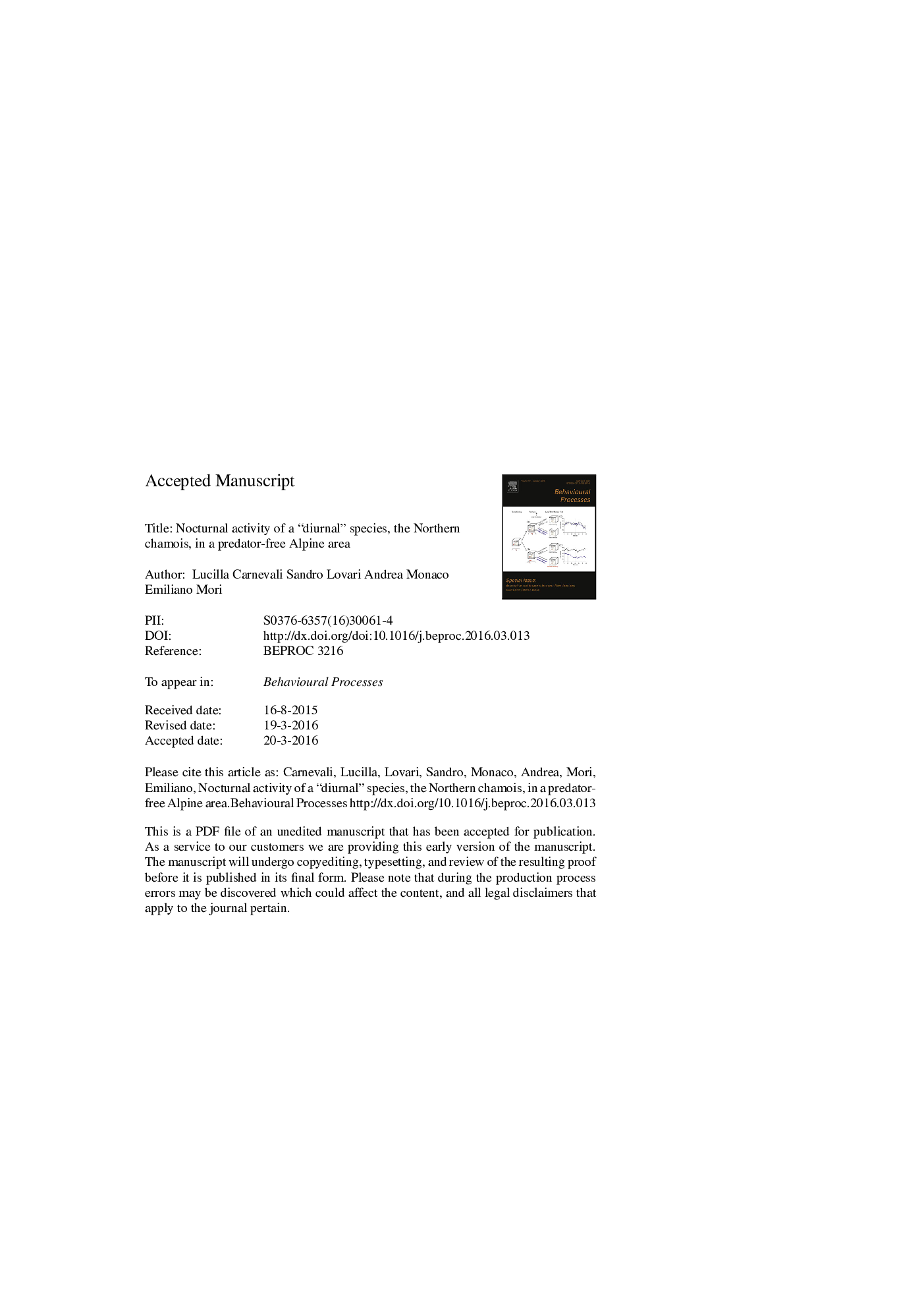| کد مقاله | کد نشریه | سال انتشار | مقاله انگلیسی | نسخه تمام متن |
|---|---|---|---|---|
| 8497106 | 1553154 | 2016 | 25 صفحه PDF | دانلود رایگان |
عنوان انگلیسی مقاله ISI
Nocturnal activity of a “diurnal” species, the northern chamois, in a predator-free Alpine area
دانلود مقاله + سفارش ترجمه
دانلود مقاله ISI انگلیسی
رایگان برای ایرانیان
کلمات کلیدی
موضوعات مرتبط
علوم زیستی و بیوفناوری
علوم کشاورزی و بیولوژیک
علوم دامی و جانورشناسی
پیش نمایش صفحه اول مقاله

چکیده انگلیسی
The reduction of predation risk is widely considered a major factor affecting the nocturnal activity of mammals. Furthermore, on precipitous mountain terrain, moving in very poor light conditions should be avoided by animals with no special eyesight adaptation to darkness. The Northern chamois Rupicapra rupicapra has been for long considered as a diurnal species, with occasional nocturnal movements. For the first time, we have quantified the nocturnal activity of 21 radiotagged female chamois from the Italian Eastern Alps (Paneveggio-Pale di San Martino Natural Park), continuously monitored for two years from sunset to sunrise, with 24Â h tracking sessions carried out for six months. Large predators were not present in the study site. Despite their mainly diurnal activity pattern, peaks of nocturnal movements were detected throughout the year. The least proportion of active night fixes occurred in January and in July, while the most were in April and in October. The greater nocturnal activity in the warm months compared to cold periods, was probably due to frozen snow cover reducing nocturnal movements. Movements were mainly concentrated in bright moonlight nights, possibly because of the absence of large predators, but more likely because of increased visibility. Changes in activity levels throughout the year may also reflect changes in energy requirements of Northern chamois.
ناشر
Database: Elsevier - ScienceDirect (ساینس دایرکت)
Journal: Behavioural Processes - Volume 126, May 2016, Pages 101-107
Journal: Behavioural Processes - Volume 126, May 2016, Pages 101-107
نویسندگان
Lucilla Carnevali, Sandro Lovari, Andrea Monaco, Emiliano Mori,